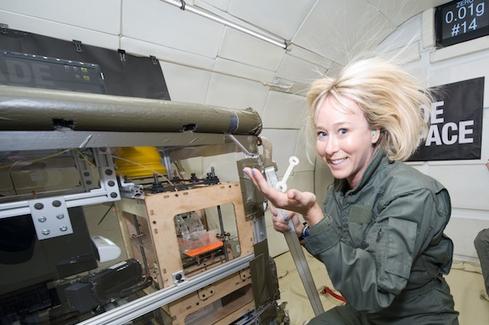NASA's $17.5B Budget Keeps Asteroid Mission On TrackNASA's $17.5B Budget Keeps Asteroid Mission On Track
Proposed fiscal 2015 budget gives NASA funds to send humans to an asteroid by 2025.


NASA Explores 3D Printing: 5 Cool Projects
NASA Explores 3D Printing: 5 Cool Projects (Click image for larger view and slideshow.)
The White House has proposed a $17.5 billion fiscal 2015 budget for NASA. The new budget aligns with NASA's "strategic plan" to prioritize space technologies essential to making advances in science, aeronautics, and space exploration, said the agency.
The budget, which is slightly less than the $17.6 billion fiscal 2014 budget, supports one of the biggest missions currently in the works at NASA: to send humans to an asteroid by 2025. The mission will include efforts to identify and characterize asteroids; a technology demonstration of high-power long-life solar electric propulsion; the development of the Space Launch System (SLS) and Orion vehicle to fly humans beyond low-Earth orbit; and research and development of new technologies for deep-space exploration. NASA has requested that Congress approve $133 million for early development of the asteroid project.
"We have to develop technologies for our asteroid mission to fund subsequent missions to Mars," said NASA administrator Charles Bolden during the agency's budget briefing on March 4. The funds also will go toward missions to other planets, such as Jupiter and Pluto, and a potential mission to Europa, Bolden said.
[Want more on NASA's plans? Read NASA's Next 5 Missions, Explored.]
Another major area of focus for NASA is launching spacecraft from US soil, and ending the agency's contract with Russia to fly astronauts to the International Space Station (ISS). In 2010, the Obama Administration created a public-private partnership plan, called the Commercial Crew Program (CCP), to help NASA reach that goal. But NASA failed to receive the requested funding for the CCP from Congress last year, delaying US launches until 2017.
The proposed fiscal 2015 budget allocates $7.88 billion to human spaceflight operations. This includes continued commercial development of US crew transportation systems, scheduled for certification by 2017, according to NASA. It also extends operation of the ISS to at least 2024. NASA plans to launch 16 science and ISS cargo missions in 2015.
{image 1}
A chunk ($706 million) of the budget will be used for space technology. Among other things, NASA said the money will go toward seven launches over 24 months, including the Deep Space Atomic Clock, Green Propellant, Sunjammer Solar Sail, and four small spacecraft demos. Part of that money will also fund solar arrays, thrusters, and power management for a high-powered solar electric propulsion system used for satellites and the asteroid mission.
Some of NASA's projects were pushed into 2015 because of cuts in appropriations last year, NASA chief financial officer Elizabeth Robinson said during the briefing. With Congressional approval, NASA hopes to receive nearly $886 million in additional funding in fiscal year 2015 to focus on specific priorities, under the President's Opportunity, Growth, and Security Initiative. This initiative focuses on innovation and technology development to grow the US economy.
Moving email to the cloud has lowered IT costs and improved efficiency. Find out what federal agencies can learn from early adopters. Also in the The Great Email Migration issue of information Government: Lessons from a successful government data site. (Free registration required.)
About the Author
You May Also Like






